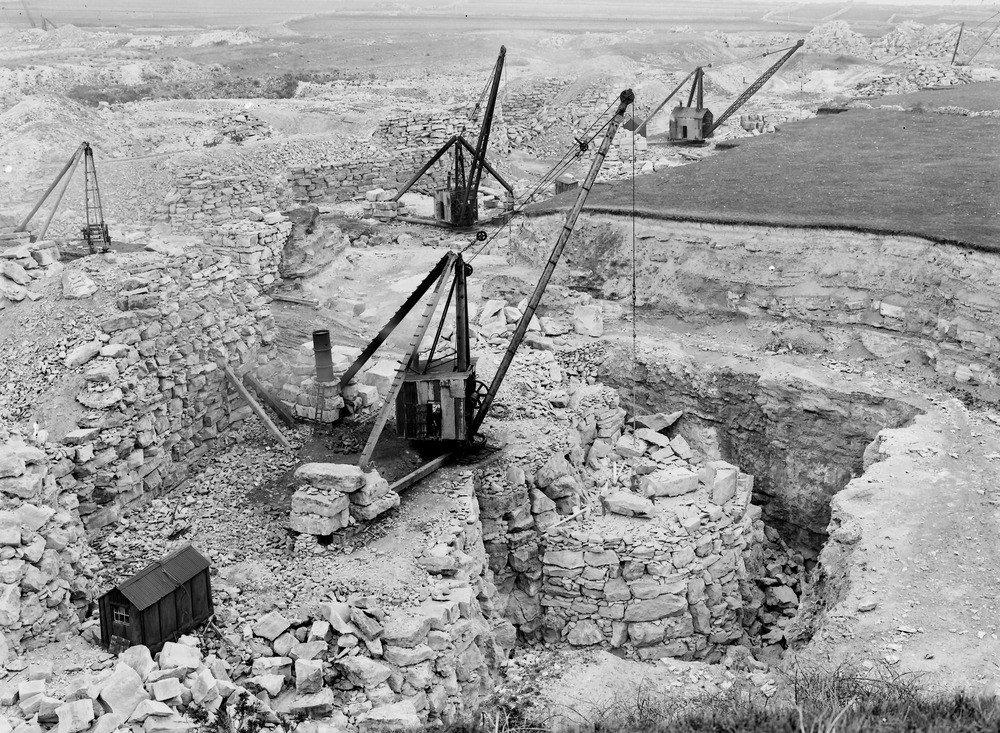| P number: | P023929 |
|---|---|
| Old photograph number: | A04952 |
| Caption: | Suckthumb Quarry, Isle of Portland, Dorset. |
| Description: | The Isle of Portland is the source of England's pre-eminent and most easily recognisable building stone, the white oolitic limestone known as Portland Stone. St. Paul's Quarry is one of many quarries that have worked the stone since earliest times and is believed to have been the source of the Portand Stone used by Sir Christopher Wren in the construction of St. Paul's Cathedral in London. The traditional method used for splitting large blocks of stone in the Portand quaries is by 'plug and feathers'. A narrow trough or series of holes is cut into the surface of the block and thin metal scales or feathers are inserted. A series of narrow iron wedges are then gently driven between the feathers, splitting the stone with the minimum of damage. The limestone quarries of Portland Bill have been in operation since Roman times. The characteristic white limestones which have proved to be extremely durable, even in the most polluted of urban environments, can be found in important buildings in all major cities and most large towns in the United Kingdom. |
| Date taken: | Tue Apr 01 00:00:00 GMT 1930 |
| Photographer: | Rhodes, J. |
| Copyright statement: | Crown |
| X longitude/easting: | 369500 |
| Y latitude/northing: | 72500 |
| Coordinate reference system, ESPG code: | 27700 (OSGB 1936 / British National Grid) |
| Orientation: | Landscape |
| Size: | 367.61 KB; 1000 x 733 pixels; 85 x 62 mm (print at 300 DPI); 265 x 194 mm (screen at 96 DPI); |
| Average Rating: | Not yet rated |
| Categories: | Unsorted Images, Geoscience subjects/ Economic geology/ Building stones, Geoscience subjects/ Economic geology/ Building stones, limestone |
Reviews
There is currently no feedback

